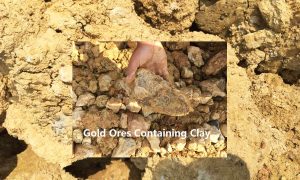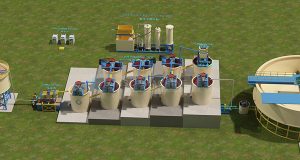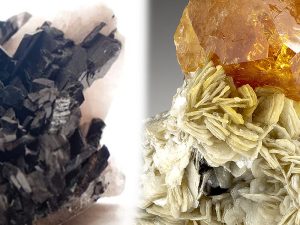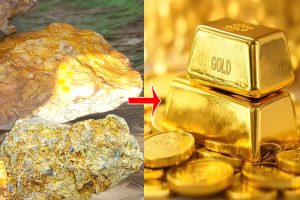Top 5 Things You Need To Know About Hydrocyclones
A hydrocyclone, or more commonly referred to as a cyclone, is simply a configured pipe tee. It requires certain elements in its design in order to perform a separation of material based on size classification equipment, but a Hydrocyclone is straightforward. The mystery of a Hydrocyclone comes from the inability to see what is happening inside. The following tips can help you get some insight into what your Hydrocyclone is doing.
1. Pressure at the inlet of the Hydrocyclone can tell you a lot
Pressure at the inlet of the Hydrocyclone is an important indicator of where the separation point (also called cut point or d50) will be. The separation point is the size at which a particle has a 50-50 chance of reporting either to the underflow or overflow. When the pressure is below the target pressure, the d50 will be coarser than desired. Higher pressure than the target will send more fines into the underflow, thereby making a finer d50 than desired. The pressure should remain stable to keep the cut point constant.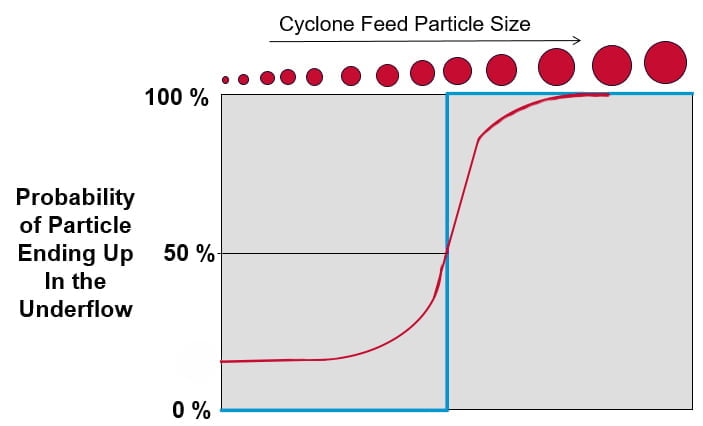
Sudden changes in pressure should always be investigated because they indicate a change in the flow rate to the Hydrocyclone. This may be caused by upstream equipment failure (such as a pump), damage to the Hydrocyclone or an obstruction. Swings in the pressure indicate surging in the flow, which could be caused by issues with a sump.
When troubleshooting a Hydrocyclone’s performance, the first thing you should look at is the pressure gauge since dismantling the unit can be difficult due to location.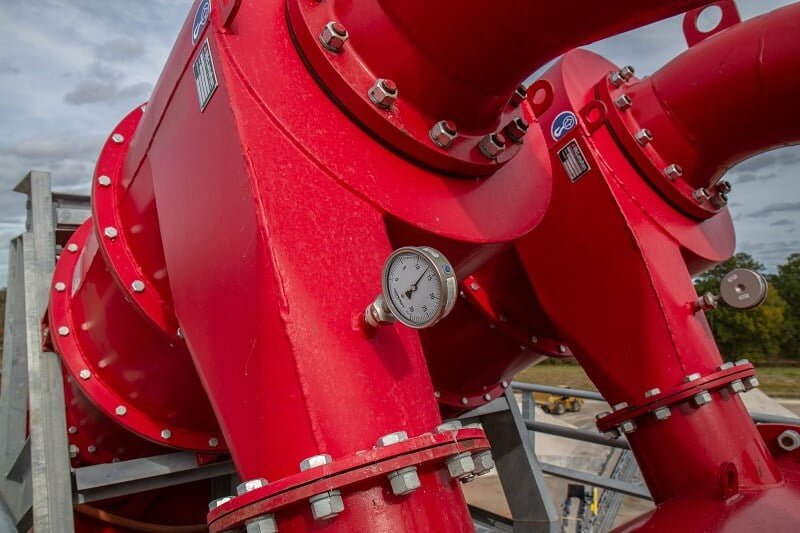
2. There are other ways to change the separation point besides changing the pressure
Since changing the pressure is not always an option or not always desirable, there are other methods to change the cut point of a Hydrocyclone. These changes are not always feasible once a hydrocyclone is installed. Three of these methods involve the hydrocyclone itself, but the first one you should look at is altering the feed.
While it is not always practical to do so in an existing application, changing the feed density will affect the cut point of the Hydrocyclone. The higher the density in the feed, the coarser the cut will be. As noted in the graph below, different applications target a particular density that fits their objective. Keep in mind that when the same performance is desired and there needs to be a change in the application, changing only the flow rate or tons per hour (tph) will affect Hydrocyclone separation. To maintain the same cut point, both the flow rate and tph need to be kept in proportion, and the internals and/or number of Hydrocyclones need to be adjusted to maintain the same pressure.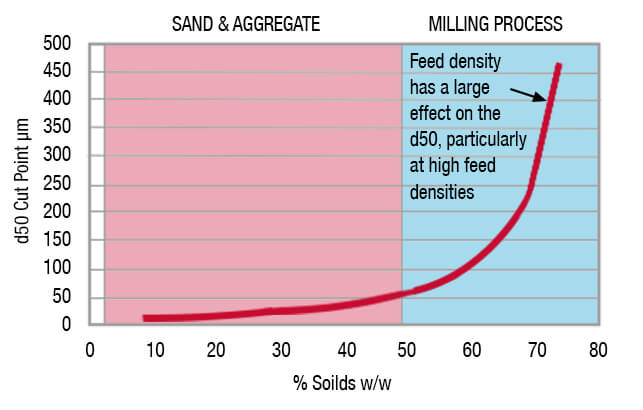
The cone angle plays an important role in the cut point of a Hydrocyclone. Generally, for fine cuts with a Hydrocyclone, a 10-degree angle cone angle is used. To make a coarser cut, the angle is increased as needed. Twenty-degree cones are common in a lot of aggregate applications, but 40 degrees and even 60 degrees have been utilized.
Not seen as much, the installed angle of the Hydrocyclone will also change the cut point. From the vertical plane, laying the Hydrocyclone down will cause it to make a coarser cut. The cone angle must be taken into account so the Hydrocyclone is not tilted too far. A 10- to 15-degree tilt will not have significant impact, but a 75-degree tilt can almost double the cut size.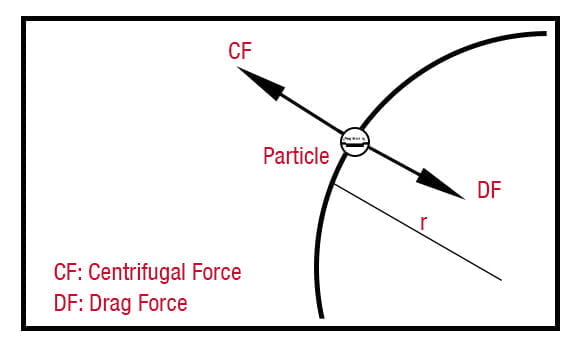
Multiple, smaller Hydrocyclones operating at the same pressure as one large Hydrocyclone will have a finer cut point. Without going too deep into the math, the two forces that have the most impact on the cut point are centrifuge (CF) and drag (DF). With the CF directly affected by the radius of the Hydrocyclone, the cut point changes. The cut point is where a particle has an equal amount of CF and DF, thereby giving it a 50-50 chance of going either way.
3. A Hydrocyclone has no moving parts
It may be obvious to state that a Hydrocyclone has no moving parts, but many times it is overlooked when troubleshooting. A Hydrocyclone is composed of a housing, liners and assembly hardware, so there are only so many things that can go wrong with the Hydrocyclone itself. Foreign debris, lining failure or improper assemblies are the main issues that can be traced back to the Hydrocyclone. Arguably speaking, the foreign debris is caused by the feed but can only be found by looking inside the Hydrocyclone or at the discharge points. Dismantling a Hydrocyclone is not always the easiest task because they tend to be installed in hard-to-reach locations, so it can pay off to ensure all equipment prior to the Hydrocyclone is operating properly.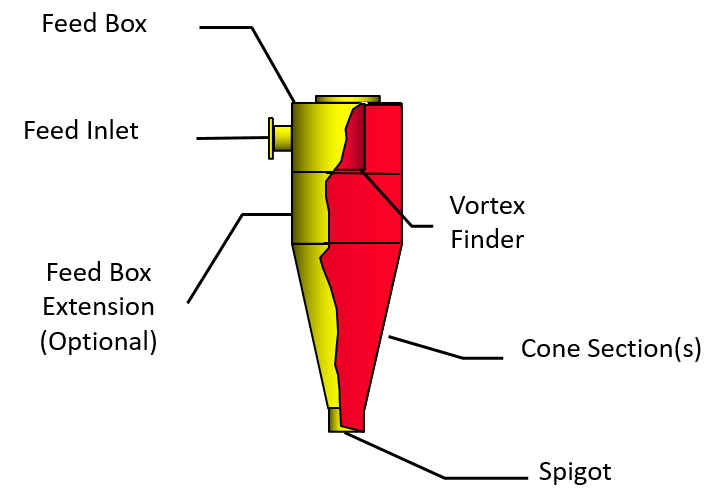
A Hydrocyclone operates at a required pressure, which is usually provided by a pump. Anything that causes instability in the flow rate, as shown by the pressure reading, will affect the performance of the Hydrocyclone. A poorly designed sump can send entrapped air or surges in materials.
A properly operating pump will go a long way to ensure that a Hydrocyclone is performing correctly. In contrast, a pump with issues creates a Hydrocyclone with issues.
4. A Hydrocyclone can be modified to make a dry underflow while maintaining a high separation efficiency
A hydrocyclone uses an air core, which forms at the apex and extends up to the vortex finder. The formation of this air core is paramount to making a separation, and if it collapses, the separation efficiency dramatically drops. Therefore, the idea of modifying a Hydrocyclone to completely remove the air core should be doomed to failure.
A Separator™ or siphon-assisted Hydrocyclone does exactly that and maintains a high separation efficiency. The cut point shifts slightly coarser. There are a number of reasons for this shift, but one that is easy to see is the change in the water split. Fines go with the water, and a Separator™ decreases the amount of water reporting to the underflow. The name itself comes from the idea of separating the water from the solids.
In addition to lower percent moisture in the underflow, a Separator™ is able to handle larger swings in percent solids in the feed with minimal effect on performance.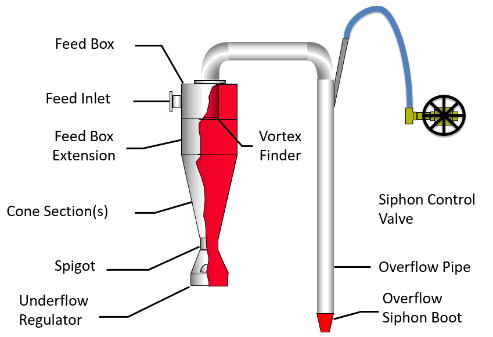
Products
Send Us A Message
More Posts
related Solutions
- Placer Gold Process Plant
- Diamond Mining Process
- Silver Flotation Process
- Gold Flotation Process
- Gold CIL Processing Plant
- Gold CIP Processing Plant
- Dense Media Separation(DMS) Process
- Copper Processing Plant
- Lead Zinc Ore Processing
- Tungsten Ore Processing
- Magnetite Separation Plant
- Manganese Ore Processing
- Chrome Processing Plant
- Quartz Beneficiation Plant
- Phosphate Rock Processing
- Fluorite Ore Processing
- Tantalum Niobium Ore Processing
- Tin Ore Processing Plant
- Titanium Beneficiation Plant
- Graphite Ore Processing
- Hematite Separation Process
- Iron Ore Beneficiation Plant
- Kaolin Processing Plant
- Limonite Ore Dressing
- Lithium Processing Plant
- Magnetite Separation Plant
- Molybdenum Flotation Process
- Cobalt Ore Processing
- Nickel Ore Beneficiation
- Antimony Ore Processing
- Barite Ore Beneficiation
- Feldspar Processing Plant
- Coal Washing Process
- Beach Sand Beneficiation Plant
- Tailings Processing
- Chrome Wash Plant
